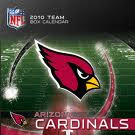Already, 2012 is shaping up to be the first “Twitter election,” but the social media site presents both pitfalls and opportunities for political campaigns.
The rise of new Internet services has been a game changer in recent campaign cycles. In 2006, a YouTube video of then-Sen. George Allen (R-Va.) using the term “macaca” helped sink his reelection bid, and in 2008, Barack Obama, energized his young supporters through Facebook.
In 2012, the Web phenomenon most likely to change the political dynamic is Twitter, the social networking site that creates a real-time loop of communication among its users.
Patrick Hynes, a communications consultant who worked for John McCain’s 2008 presidential campaign and Tim Pawlenty’s Political Action Committee in 2011, said Twitter can be an effective tool for pushing stories onto the media’s radar.
“If they tweet the story, you’re nearly guaranteed to get a couple hundred re-tweets,” Hynes said. Once a story goes viral on Twitter, he said, it becomes impossible for mainstream media outlets to ignore it.
While the potential for a story to explode on Twitter can be a powerful tool for campaigns, it also creates new challenges.
“Traditionally, before Twitter, stories ran in the morning. You had time to get to reporters,” said Jason Miner, director of public affairs for the Glover Park Group and a former research director for the Democratic National Committee. “Now that conversation takes place in real-time, in a matter of minutes. That piece of news is out there without full context.”
He noted that can be a good thing if a campaign is trying to spread positive stories about themselves — or attack their opponents.
“The drawback is, if you’re on defense, it doesn’t give you much time to get your ducks in a row,” he said.
According to Hynes, the best way for a campaign to fight back against a negative story on Twitter is with a rapid Twitter response.
“You need to kill the narrative, and even better, turn it on your opponent,” Hynes said.
Both Hynes and Miner said campaigns should keep close tabs on what topics and campaign messages are trending on Twitter.
Hynes said the site offers campaigns a “live-action focus group” on what voters are thinking. “You can take the pulse real-time of how people are talking about things,” Miner said.
But many politicians still resist fully embracing Twitter. Emily Zanotti, a social media consultant who works for Hynes at his firm, Hynes Communications, said many politicians are afraid of making a gaffe on the fast-paced social networking site.
“As soon as you put something out there into the Twitterverse, it’s gone,” Zanotti said. “It makes Twitter a wild, wild West of social media.”
She said people expect politicians to be informal and candid when they’re tweeting from their own accounts. “You can’t be a carefully calculated image on Twitter,” she said.
It can also make it difficult for politicians to control their message.
Last month, Republicans co-opted President Obama’s slogan, "We Can't Wait," which he had been using to push his jobs bill on Twitter. Republicans used the hashtag “WeCantWait” to instead promote their bills that would roll back government regulations.
Miner emphasized that campaigns should not treat Twitter as separate from the rest of their communication strategy.
“Ultimately, Twitter is a tool and a tactic,” he said. “It’s only as effective as your core messaging and core strategy.”
Hynes said participating in the constant conversation of Twitter has become a necessity for campaigns.
“Any campaign that’s not doing that at some level is not going to succeed,” he said.















No comments:
Post a Comment